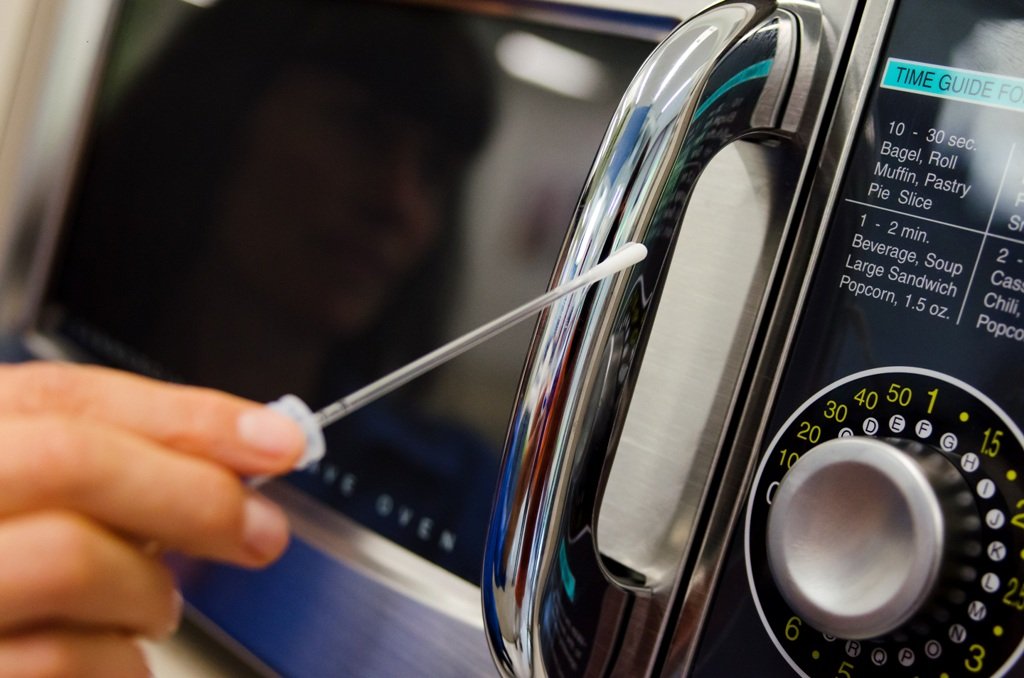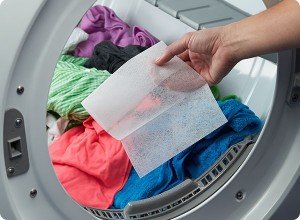Danger in the Microwave: Germs At Work And How To Avoid Them
4 min read
You probably think a microwave door handle must be cleaner than the toilet seat in your office. In fact, most people believe the restroom is the epicenter of germs in the office—and it turns out, most are wrong. A new study found that the dirtiest surfaces in the workplace are where employees prepare and eat food.
Hygienists from the Kimberly-Clark Professional Healthy Workplace Project collected nearly 5,000 individual swabs from office buildings containing more than 3,000 employees to identify the spots where germs can lurk. The participating workplaces represented a broad range of office types, including manufacturing facilities, law firms, insurance companies, healthcare companies and call centers.
Office surfaces were tested to determine which ones have high levels of contamination (an ATP count of 300 or higher; ATP is the molecule that provides the energy in the cells of all living organisms). Everyday objects with an ATP reading of 300 or higher are considered to have a high risk for illness transmission, while surfaces with an ATP reading between 100 and 300 suggest room for improvement.
According to the study, which was carried out in consultation with Dr. Charles Gerba, a professor of microbiology at the University of Arizona, break rooms and kitchens top the list, with sink and microwave door handles found to be the dirtiest surfaces of all.
“People assume that bathrooms have the most germs,” Dr. Gerba says. “A lot of studies have been done about the desktop work area, but the break room has been overlooked. Usually the break room is a germ transfer point in the workplace; people eat lunches there, they cough. More colds and flus are spread in break rooms when they touch surfaces and share space with other people.”
He adds, “You are dealing with an unregulated restaurant in a lot of ways. People with different hygiene habits are sharing the space with no regulation.”
The study shows that the percentage of the office surfaces tested and found to have an ATP count of 300 or higher, includes break room sink faucet handles (75%), microwave door handles (48%), keyboards (27%), refrigerator door handles (26%), water fountain buttons (23%) and vending machine buttons (21%).
“Any workplace that fails to use good hygiene practices on a daily basis can become a breeding ground for bacteria and viruses,” says Brad Reynolds, the North American platform leader of The Healthy Workplace Project, Kimberly-Clark Professional. “Lack of attention to cleaning and sanitizing, especially at high-risk touch points like kitchen sink handles and microwaves, can lead to the spread of colds, flu and stomach illness. And these illnesses inevitably result in the loss of productivity through absenteeism and presenteesim (coming to work while sick).”
In addition, the study found that half of all computer mice and desk phones have ATP levels above 100 but less than 300, perhaps because people tend to take more responsibility for the cleanliness of their personal spaces. However, an ATP above 100 still suggests there is a need for more attention to the importance of good hygiene in the office.
“Research indicates that people feel higher levels of comfort and safety when they believe they are in their own personal space, such as their homes, cars, or desks at the office,” Reynolds says. “This is because they tend to believe that their germs are safer than other peoples’ germs. So yes, people believe that their own keyboards and computer mice are clean because they are the primary users of these items. However, people should keep in mind that workplaces today are highly collaborative environments with many common touch points.”
Every time a worker visits the kitchen, touches an elevator button or drinks from a water fountain there is an opportunity to come in contact with germs and take them back to their desk. At that point, bacteria and viruses from other people are deposited in their personal space, Reynolds says.
Luckily, there are easy solutions or ways to avoid spreading germs and contracting bacteria and viruses at work. Dr. Gerba and Brad Reynolds share five simple tips for staying healthy in the workplace:
- Wash and dry your hands upon arrival at work, after using the restroom, and before and after eating. Simply drying your hands thoroughly with a paper towel after rinsing with water alone can reduce germs by 77%.
- Wipe the following items daily with a disposable disinfectant wipe: desk surface, keyboard, mouse, telephone, kitchen sink handles, microwave handle, refrigerator handle, kitchen countertops, conference room tables, conference room phone, and water fountain buttons. Desks typically have 400 times more germs than toilet seats. Develop a habit to wipe your desktop, keyboard, mouse and phone at the beginning or end of every workday.
- Keep hand sanitizer at your desk and use it before and after meetings, and when leaving work at the end of the day.
- Use disinfectant wipes to wipe down the high touch areas in a break room.
- Keep hand sanitizer in the break room to reinforce healthy hand hygiene behaviors.
Source: http://www.forbes.com/sites/jacquelynsmith/2012/05/23/danger-in-the-microwave-germs-at-work-and-how-to-avoid-them/






